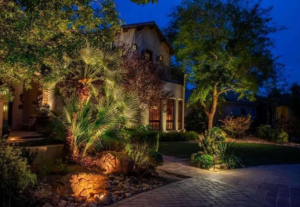Pests are more than just a nuisance, they can cause property damage and spread disease. Steps to preventing pest infestation include preventing entry into your home, cleaning up crumbs and spills, fixing leaky pipes and dehumidifying basements.
Consider nonchemical methods first, before turning to sprays and chemicals. If needed, use them only as a last resort and in combination with other preventive measures. Contact Pest Control Falmouth now!

Insects occupy a broad range of ecological niches and are an important part of Earth’s natural systems. However, insects can also negatively impact humans and our food supply through their role as vectors of disease.
Infectious microorganisms can be introduced into farmed insect populations by contaminated water, litter, debris or workers, backsiphoning of recirculated irrigation water wells and accidental spills and leaks. These bacteria, viruses, fungi or protozoa can cause diseases in the farm animals that serve as hosts for these insects.
Weather conditions affect pests by influencing the growth of their host plants. Many natural predatory or parasitic organisms eat and/or suppress pest species. Pheromones, manufactured or naturally occurring chemicals, can also help control pest populations. These pheromones are used to confuse male insects and prevent them from mating, which reduces their numbers. Other pheromones, such as juvenile hormones, can keep the earlier stages of an insect from maturing into normal adult forms.
Rodents
Rodents can be serious pests, damaging property with their gnawing and contaminating food with urine and feces. They are carriers of dangerous diseases such as hantavirus and leptospirosis, and they can also spread fires by chewing on gas lines and electrical wiring.
Rodents are opportunistic feeders and will invade buildings in search of food, water and shelter. Storage of garbage, dry goods and fruits in sealed containers, addressing food spillage and removing clutter from outdoor areas will deprive rodents of their primary sources of food and prevent them from entering the building.
It is also important to report conditions that may attract rodents – such as plumbing leaks, open vents and cracks in walls or floors – to landlords or property managers so they can be addressed promptly. Long-term control of rodents combines sanitation, exclusion and the use of traps and baits.
Bed Bugs
Bed bugs are painfully tenacious and can be challenging to eliminate. Their flattened bodies enable them to fit into tight crevices, where they reside during the day. Bed bugs also don’t fly or jump on people as fleas do, so it’s difficult to transport them from one place to another.
Infestations in hotels, dormitories and apartment complexes usually require professional pest control services. Management practices that help control the infestations include educating staff to recognize early signs and taking prompt action.
Professionals use a variety of insecticides to treat seams, folds, cracks and crevices where the pests tend to reside. They don’t spray mattresses or furniture, which can be hazardous to people and pets. Households can apply desiccants, such as pool or food grade diatomaceous earth (don’t use the kind that contains asbestos), to dry out the insects.
Cockroaches
Cockroaches are omnivorous insects that feed on a variety of plant and animal matter. They exhibit nocturnal habits and are highly adaptable, seeking out warm and humid environments to thrive.
Their origin in the tropics leads them to frequent homes and buildings that provide the warmth and moisture they need to survive. They may also be drawn to laundry rooms, damp basements or kitchens with leaky pipes.
A cockroach infestation often can be identified by a dark smudge, or fecal focal point, on a wall, cabinet or other surface. Infestations are often accompanied by a musty odor and gummy dust particles that look like ground pepper.
Thorough inspections to identify where cockroaches are hiding and application of pesticide according to label directions can help to control them. Integrated Pest Management strategies include reducing food and water sources, sealing entry points and cleaning frequently used spaces.
Ants
Ants, like bees and wasps, are social insects that work together for the benefit of the colony. They aerate lawns, control weeds and reduce populations of plant-feeding pests. They are not a nuisance in residential gardens but should be controlled when they invade buildings or damage valuable plants.
Ants may nest indoors or in warm, moist outdoor locations. Seal crevices and gaps through which ants enter. Regular inspections can help monitor ant activity and identify indoor nesting sites.
The general expected effects of ant abundance on natural enemies of honeydew-producing arthropod pests are that the presence of ants can reduce the abundance and/or behavior of these natural enemies, leading to less pest damage to crops [28]. However, field size, ant exposure time and crop system influence these expectations. [28] Klotz et al., 2006. Pest Notes: Ants. Oakland: Univ. Calif. Agric. Nat. Res. Publ. 7487.
Birds
Birds can be a pest in some situations, but they also provide valuable ecosystem services and aid farmers by controlling insect populations. For example, Humboldt State University wildlife habitat ecologist Matt Johnson and his team found that birds help to prevent budworm outbreaks by eating them during non-outbreak years. They also reduce the size of a budworm peak and decrease the number of insects that escape from the population through maternal transfer.
Insect declines have many causes, but one of the most significant factors is the use of harmful chemicals in pesticides. Often, when a homeowner or farmer treats a pest infestation, they are using chemicals that can harm birds and other animals. Green Pest Services uses targeted treatments that are safe for pets, children and the environment as well as beneficial insects. These are far more effective than the harsh chemical solutions that were once used.
Wasps
During the summer wasps can be particularly problematic, especially when their nests are built in heavily trafficked areas. Hornets, yellow jackets, mud daubers and cicada killers are amongst the wasp species that may sting people who come too close to their nests.
Wasps are an important part of the ecosystem and can help control pests such as caterpillars and beetles. They are also beneficial for pollination.
If you have a wasp’s nest on your property, it is best to contact a pest controller for removal. They will use an insecticide (usually 1% propoxur or dichlorvos) or wasp killing dust that is available from hardware stores. The entrance to the nest should be plugged after treatment to prevent worker wasps from escaping and defending the colony. It is also recommended to wear protective clothing when dealing with wasp nests to minimize the risk of stings.
Mosquitos
Mosquitoes are a significant public health problem, transmitting deadly diseases such as dengue fever and encephalitis. Despite this, sound mosquito control strategies are not widely implemented or sustained in endemic areas. New tools are continually emerging, leveraging knowledge of vector species biology, behaviour and ecology.
Successful pest control programs require a holistic approach that includes a strong emphasis on source reduction and surveillance. This integrated approach, known as Integrated Pest Management (IPM), seeks to minimize the need for pesticides by promoting deterrence and habitat modification. This is especially critical in tropical and subtropical regions where delicate ecosystems can be easily impacted by insecticide spray mists. It is also important to involve communities in monitoring and control efforts to maximize impact. This is essential in raising awareness of the need to use personal protection and preventive actions against mosquito-borne diseases.
Flies
Flies are an annoying nuisance to most people and a significant public health concern, as they spread disease-causing microorganisms. A fly can carry up to 4 million bacteria on its body and 28 million in its stomach!
The most important approach to filth fly control is sanitation. Eliminating materials to which flies are attracted, such as garbage cans, animal wastes and rotting organic material, is essential. Garbage cans should have tight-fitting lids, be emptied frequently and kept as far away from buildings as possible. Manure should be composted or buried under at least 15 cm of soil to prevent maggot production.
Biological controls, such as parasitoid wasps, can be used in conjunction with sanitation to effectively manage fly infestations. However, additional releases of these wasps may be necessary throughout the fly season to maintain high levels of control.
Beetles
Beetles are a very large group of insects that includes many species that attack crops and home gardens. Some beetles (like grubs and June beetles) damage lawns, while others such as lady beetles and rove beetles help gardeners control plant pests. They also protect trees and flowers. Generally, beetles don’t cause harm to people or pets, except for the Japanese beetle which damages vegetables and other garden plants.
Keep beetles at bay by storing food in airtight containers and inspecting pantry items regularly for signs of beetle infestations. Indoors, beetles can be controlled by vacuuming up crumbs and cleaning out closets. You can also try placing traps that attract and kill beetles, or diatomaceous earth, a powder made from fossilized algae that dehydrates insects until they die, around entry points to your home.





